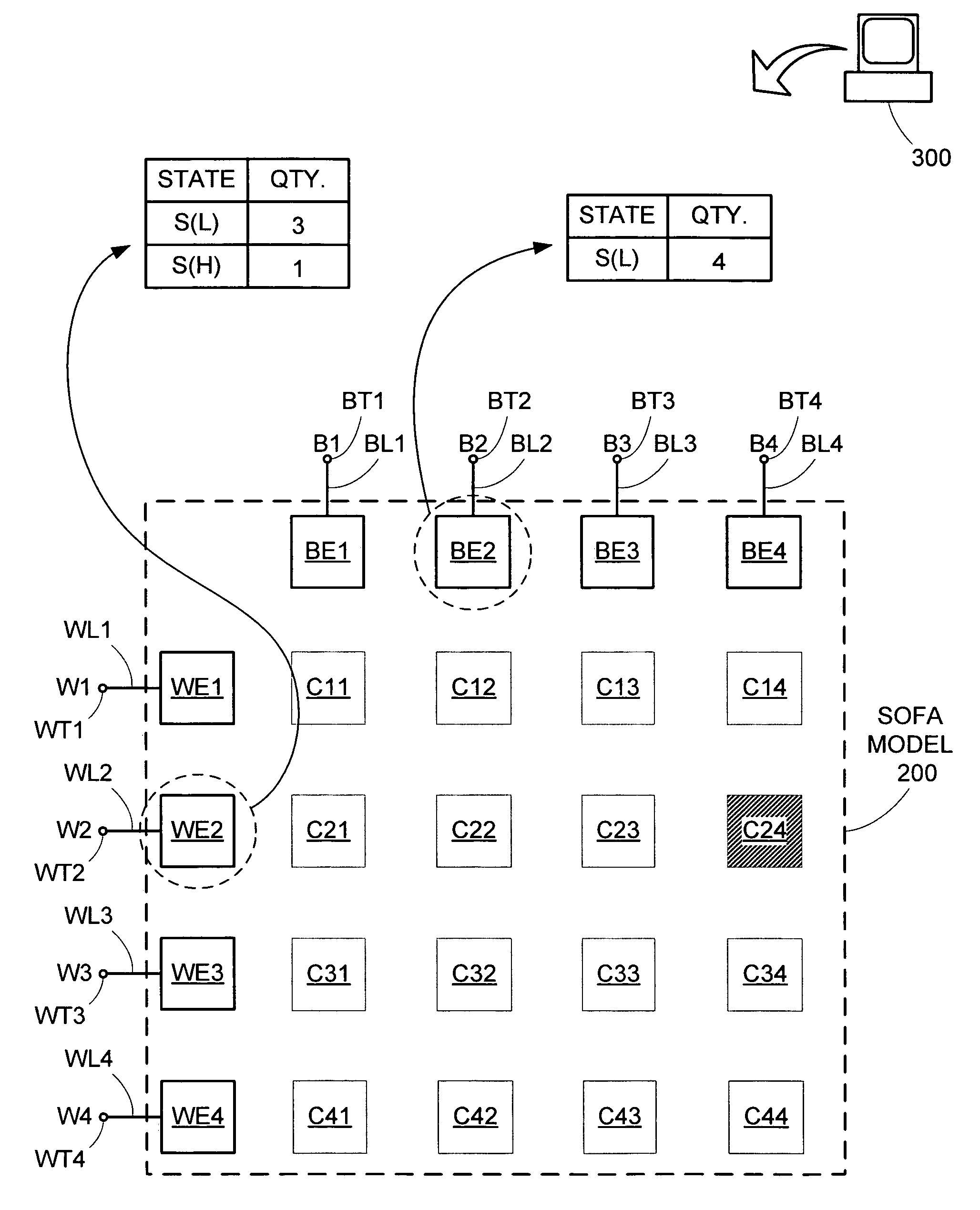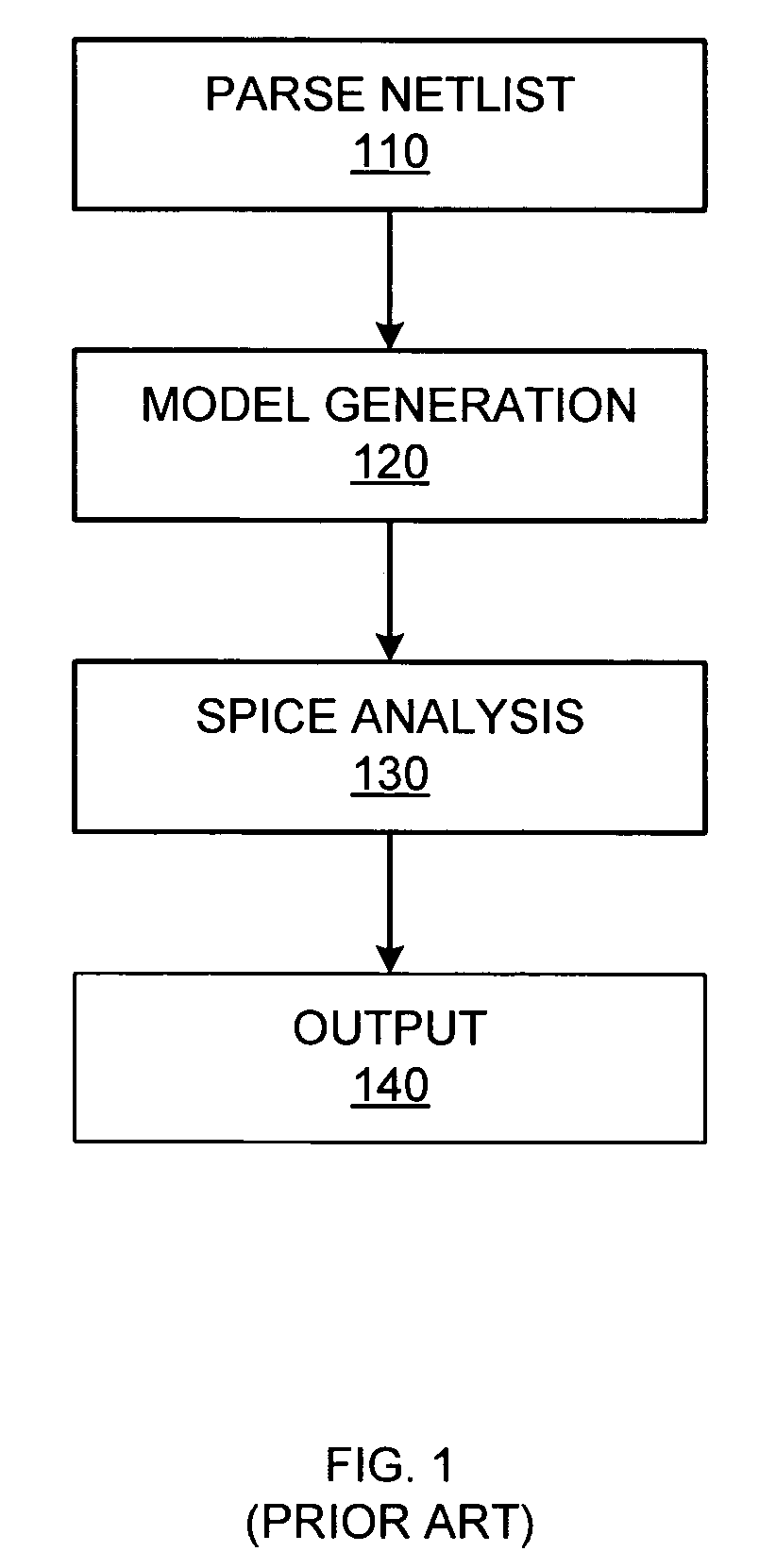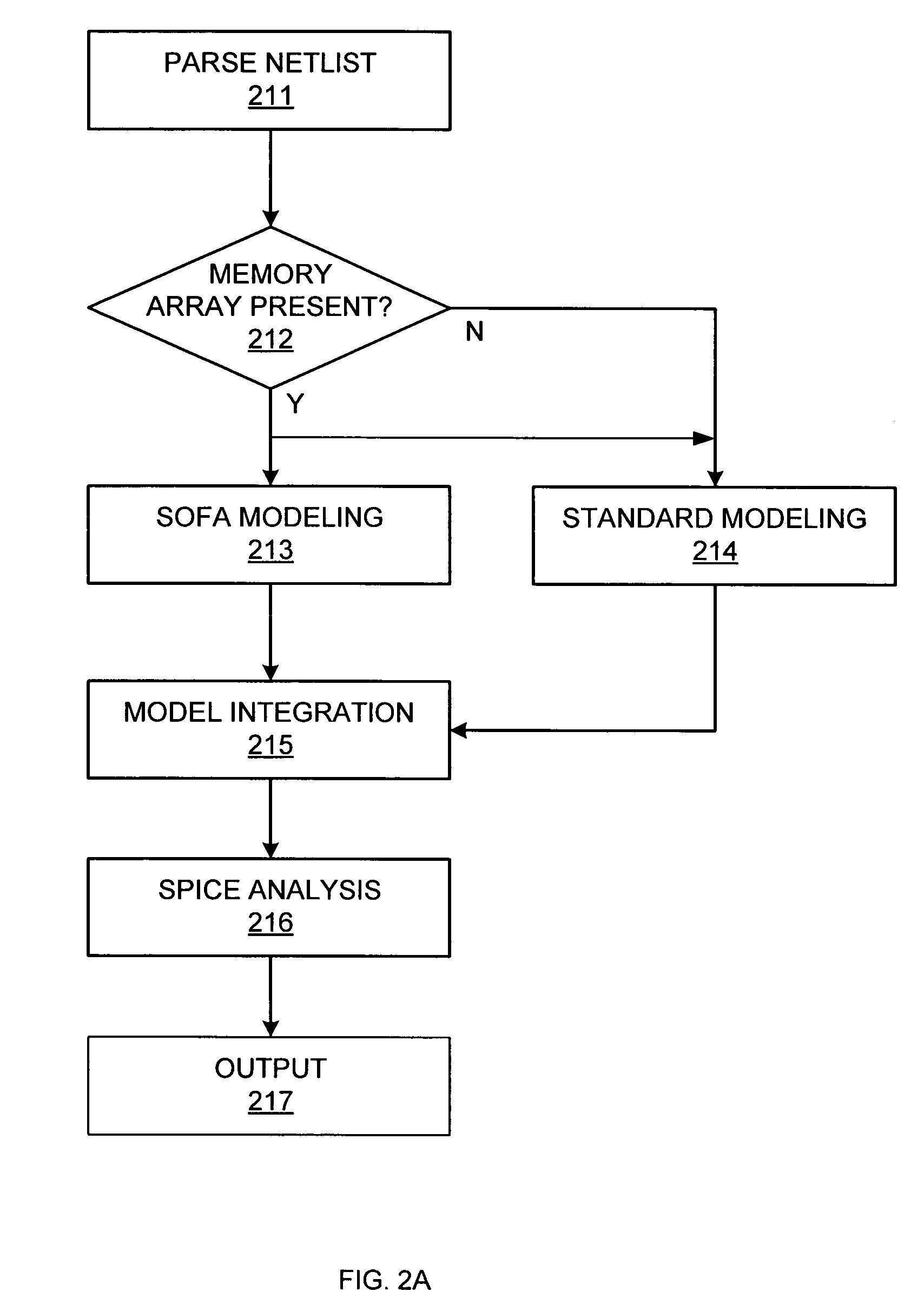SPICE optimized for arrays
a spice and array technology, applied in the field of circuit simulations, can solve the problems of not significantly increasing the memory requirements of simulation, and the conventional spice modeling and simulation techniques cannot so as to minimize computing time and memory requirements, and efficiently and accurately simulate memory arrays
- Summary
- Abstract
- Description
- Claims
- Application Information
AI Technical Summary
Benefits of technology
Problems solved by technology
Method used
Image
Examples
Embodiment Construction
[0023]Conventional SPICE modeling and simulation techniques are unable to efficiently and accurately simulate memory arrays. To overcome the limitations of conventional techniques, a memory array can be modeled as a black box element that includes the terminals of the memory array, but replaces the interior memory cells with boundary elements (mathematical models) that track the cell states of the memory cells connected to a particular array terminal. Each boundary element maintains a cell state distribution for those memory cells that allows the boundary element to simulate the behavior of those memory cells by modeling each cell state once, multiplying those results by the quantities from the cell state distribution, and then adding those results. In this manner, the overall behavior of the memory array can be simulated without modeling each individual cell within the memory array, thereby minimizing computing time and memory requirements.
[0024]FIG. 2A shows a flow diagram of SPIC...
PUM
 Login to View More
Login to View More Abstract
Description
Claims
Application Information
 Login to View More
Login to View More - R&D
- Intellectual Property
- Life Sciences
- Materials
- Tech Scout
- Unparalleled Data Quality
- Higher Quality Content
- 60% Fewer Hallucinations
Browse by: Latest US Patents, China's latest patents, Technical Efficacy Thesaurus, Application Domain, Technology Topic, Popular Technical Reports.
© 2025 PatSnap. All rights reserved.Legal|Privacy policy|Modern Slavery Act Transparency Statement|Sitemap|About US| Contact US: help@patsnap.com



